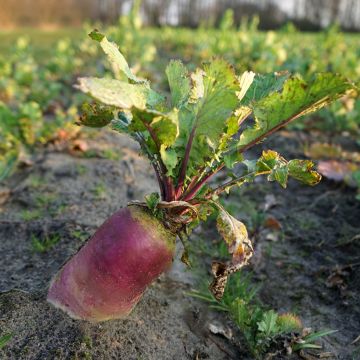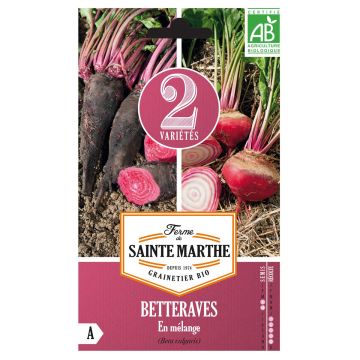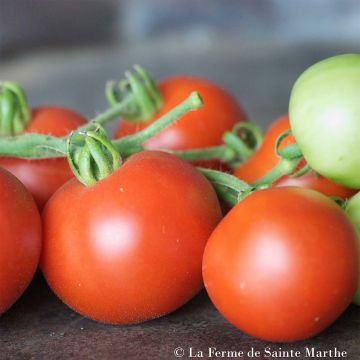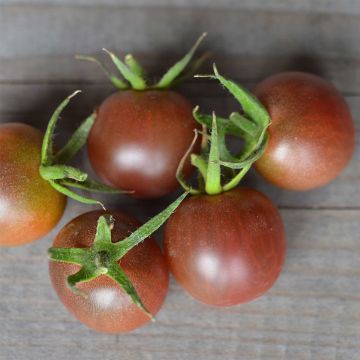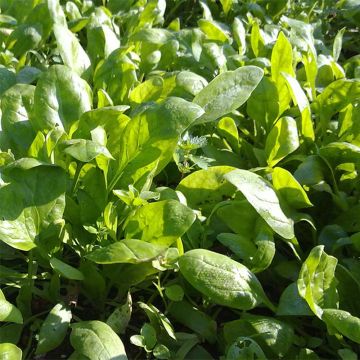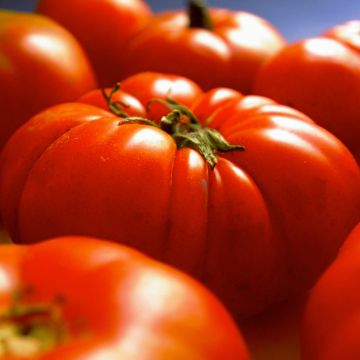

Beta vulgaris Detroit 3 Short Top
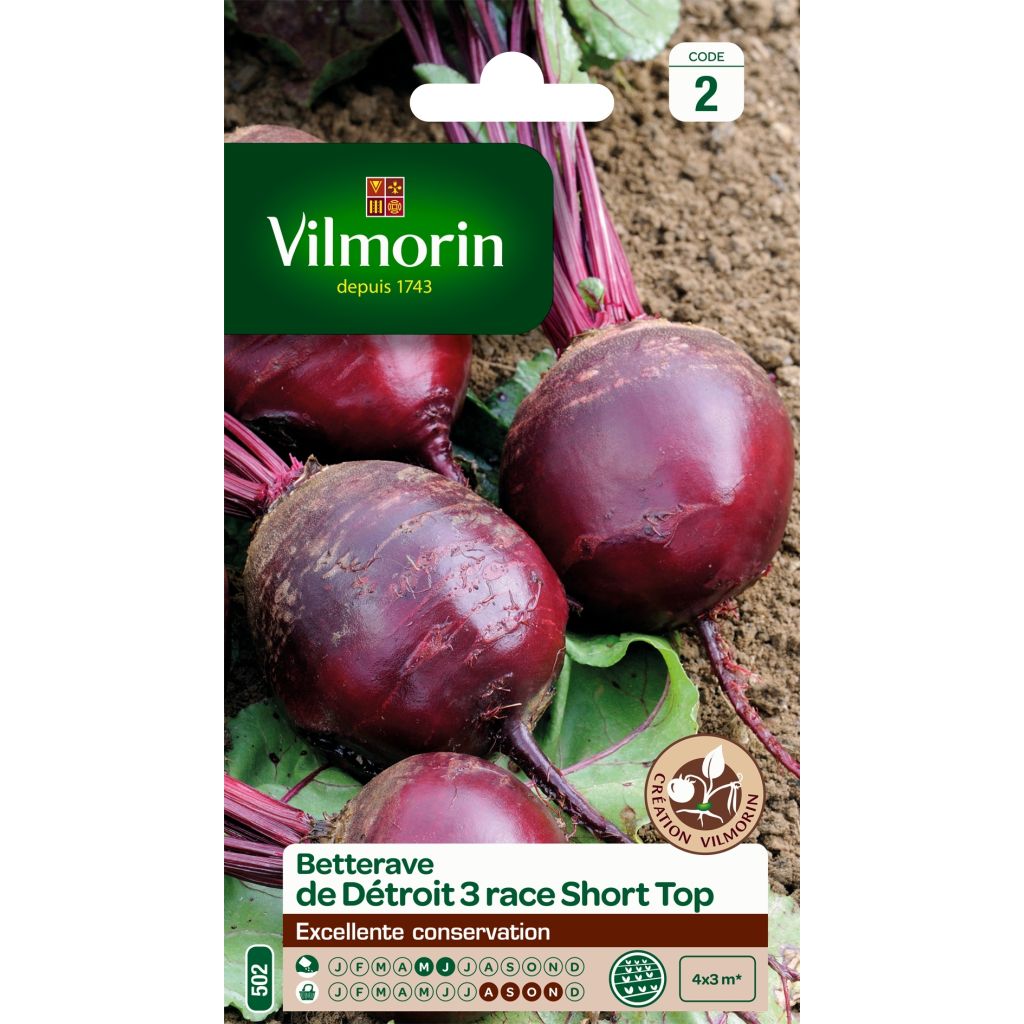

Beta vulgaris Detroit 3 Short Top
Beta vulgaris Detroit 3 Short Top
Beta vulgaris Détroit 3 race Short Top
Beet, beetroot
This item cannot be shipped to the selected country
Dispatch by letter from €3.90
More information
Schedule delivery date,
and select date in basket
This plant carries a 6 months recovery warranty
More information
We guarantee the quality of our plants for a full growing cycle, and will replace at our expense any plant that fails to recover under normal climatic and planting conditions.
Seed-only orders are dispatched by sealed envelope. The delivery charge for seed-only orders is €3.90.
Description
The Detroit 3 Short Top red beetroot produces round roots, of a beautiful red colour and tender, sweet flesh. This variety is well-suited for storage. It can be sown from May (or as early as March undercover) for a harvest 4 months later.
Beetroot is a root vegetable from the Chenopodiaceae family. It is usually consumed cooked and cut into cubes, but can also be used in mousses or verrines. When raw, it can be grated and mixed with other raw vegetables. As for the dark red veined leaves, they can be delicious in mixed salads or cooked like spinach. Prefer young shoots harvested during thinning, as they will be more tender.
There are many varieties of beetroot, producing round, elongated, or flattened vegetables, often red but sometimes yellow, pink, or white. Most beet seeds are actually clusters of seeds, so multiple plants will emerge in the same spot. Once the seedlings have sprouted, it will be necessary to thin them, keeping only the most vigorous plant.
Harvesting: Beetroot is ready to be harvested when the root is large enough, about 10 cm (4in), starting from mid-July for the first sowings and then as needed until October. In spring, when thinning the plants, keep the young leaves to consume them in mixed salads.
Storage: Pull out the beetroots and let them dry on the ground for a day in the sun. Cut the leaves 1 cm (0.5in) above the collar, brush the beetroots if necessary, and store them in a cool, dark place, ideally under a layer of dry sand. Beetroots are perfectly suited for long-term storage.
Gardener's tip: Beetroot likes the company of lettuces, onions, and cabbages. However, it does not appreciate being planted next to leeks or spinach.
Report an error about the product description
Harvest
Plant habit
Foliage
Botanical data
Beta
vulgaris
Détroit 3 race Short Top
Chenopodiaceae
Beet, beetroot
Cultivar or hybrid
Annual
Other Beetroot seeds
Planting and care
Beetroot thrives in damp, well-drained, and moderately fertile soil. Compost can be added in autumn or spring. Choose a sunny or semi-shaded location as beetroot likes light but not excessive heat. Watering should be moderate, especially while waiting for germination and during hot and dry weather. Mulching around the plants should be done in the case of drought.
Beetroot can be sown from March (undercover) until June. Sowing directly in the ground should start from mid-May when the soil has warmed up enough and the risk of frost has passed. To stagger the harvest, you can sow, for example, every 15 days. Germination occurs 10 to 15 days after sowing.
Sowing under cover: Fill pots with special seed compost and plant 3 or 4 seeds per pot. You can also sow in trays with drainage holes (one seed every 5 cm (2in)). Keep the soil slightly moist. When the seedlings have grown 5 leaves, around 10 cm (4in), thin them out to keep only one plant per pot. Depending on the sowing date, you can either transplant them into the ground if the soil is warm enough, or keep a plant in each pot until temperatures rise. When transplanting into the ground, leave a spacing of 30 cm (12in) between rows and 20 cm (8in) within the row.
Sowing in the ground: Stretch a string and make furrows 2 cm (1in) deep, spacing the rows 30 cm (12in) apart. Sow thinly, one seed every 5 cm (2in) or in clusters, 3 to 4 seeds in each hole, with a distance of 20 cm (8in) between holes. Cover with fine soil and gently firm it down with the back of a rake. Water with a fine spray to keep the soil moist. When the plants have grown 5 leaves, around 10 cm (4in), thin them out to keep only one plant every 20 cm (8in).
The plants removed during thinning can be easily transplanted elsewhere.
Cultivating beetroot requires regular hoeing and weeding around the plants.
Seedlings
Care
Intended location
This item has not been reviewed yet - be the first to leave a review about it.
Vegetable seeds
Haven't found what you were looking for?
Hardiness is the lowest winter temperature a plant can endure without suffering serious damage or even dying. However, hardiness is affected by location (a sheltered area, such as a patio), protection (winter cover) and soil type (hardiness is improved by well-drained soil).

Photo Sharing Terms & Conditions
In order to encourage gardeners to interact and share their experiences, Promesse de fleurs offers various media enabling content to be uploaded onto its Site - in particular via the ‘Photo sharing’ module.
The User agrees to refrain from:
- Posting any content that is illegal, prejudicial, insulting, racist, inciteful to hatred, revisionist, contrary to public decency, that infringes on privacy or on the privacy rights of third parties, in particular the publicity rights of persons and goods, intellectual property rights, or the right to privacy.
- Submitting content on behalf of a third party;
- Impersonate the identity of a third party and/or publish any personal information about a third party;
In general, the User undertakes to refrain from any unethical behaviour.
All Content (in particular text, comments, files, images, photos, videos, creative works, etc.), which may be subject to property or intellectual property rights, image or other private rights, shall remain the property of the User, subject to the limited rights granted by the terms of the licence granted by Promesse de fleurs as stated below. Users are at liberty to publish or not to publish such Content on the Site, notably via the ‘Photo Sharing’ facility, and accept that this Content shall be made public and freely accessible, notably on the Internet.
Users further acknowledge, undertake to have ,and guarantee that they hold all necessary rights and permissions to publish such material on the Site, in particular with regard to the legislation in force pertaining to any privacy, property, intellectual property, image, or contractual rights, or rights of any other nature. By publishing such Content on the Site, Users acknowledge accepting full liability as publishers of the Content within the meaning of the law, and grant Promesse de fleurs, free of charge, an inclusive, worldwide licence for the said Content for the entire duration of its publication, including all reproduction, representation, up/downloading, displaying, performing, transmission, and storage rights.
Users also grant permission for their name to be linked to the Content and accept that this link may not always be made available.
By engaging in posting material, Users consent to their Content becoming automatically accessible on the Internet, in particular on other sites and/or blogs and/or web pages of the Promesse de fleurs site, including in particular social pages and the Promesse de fleurs catalogue.
Users may secure the removal of entrusted content free of charge by issuing a simple request via our contact form.
The flowering period indicated on our website applies to countries and regions located in USDA zone 8 (France, the United Kingdom, Ireland, the Netherlands, etc.)
It will vary according to where you live:
- In zones 9 to 10 (Italy, Spain, Greece, etc.), flowering will occur about 2 to 4 weeks earlier.
- In zones 6 to 7 (Germany, Poland, Slovenia, and lower mountainous regions), flowering will be delayed by 2 to 3 weeks.
- In zone 5 (Central Europe, Scandinavia), blooming will be delayed by 3 to 5 weeks.
In temperate climates, pruning of spring-flowering shrubs (forsythia, spireas, etc.) should be done just after flowering.
Pruning of summer-flowering shrubs (Indian Lilac, Perovskia, etc.) can be done in winter or spring.
In cold regions as well as with frost-sensitive plants, avoid pruning too early when severe frosts may still occur.
The planting period indicated on our website applies to countries and regions located in USDA zone 8 (France, United Kingdom, Ireland, Netherlands).
It will vary according to where you live:
- In Mediterranean zones (Marseille, Madrid, Milan, etc.), autumn and winter are the best planting periods.
- In continental zones (Strasbourg, Munich, Vienna, etc.), delay planting by 2 to 3 weeks in spring and bring it forward by 2 to 4 weeks in autumn.
- In mountainous regions (the Alps, Pyrenees, Carpathians, etc.), it is best to plant in late spring (May-June) or late summer (August-September).
The harvesting period indicated on our website applies to countries and regions in USDA zone 8 (France, England, Ireland, the Netherlands).
In colder areas (Scandinavia, Poland, Austria...) fruit and vegetable harvests are likely to be delayed by 3-4 weeks.
In warmer areas (Italy, Spain, Greece, etc.), harvesting will probably take place earlier, depending on weather conditions.
The sowing periods indicated on our website apply to countries and regions within USDA Zone 8 (France, UK, Ireland, Netherlands).
In colder areas (Scandinavia, Poland, Austria...), delay any outdoor sowing by 3-4 weeks, or sow under glass.
In warmer climes (Italy, Spain, Greece, etc.), bring outdoor sowing forward by a few weeks.








































